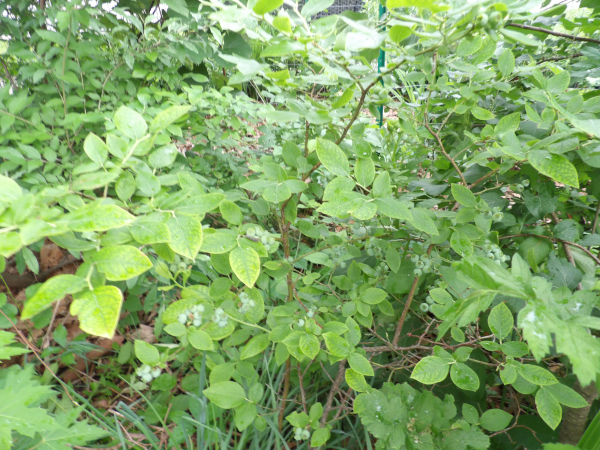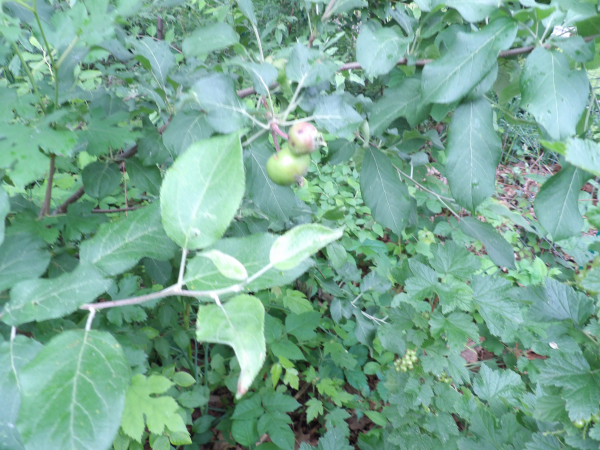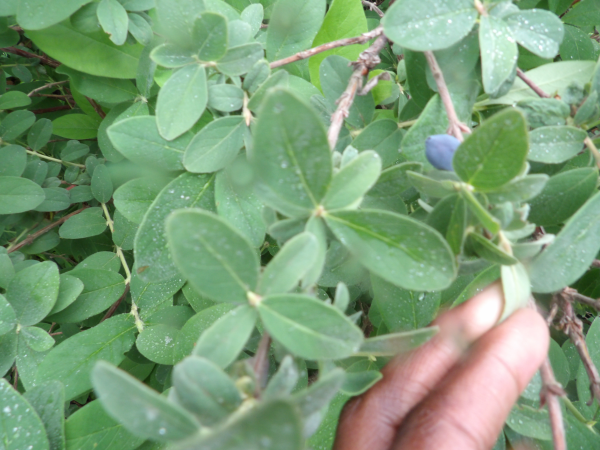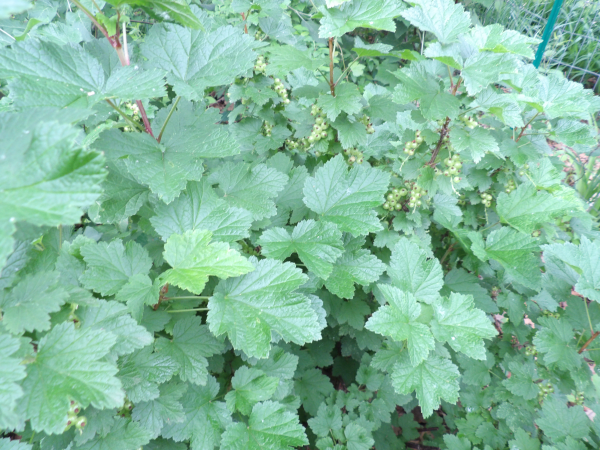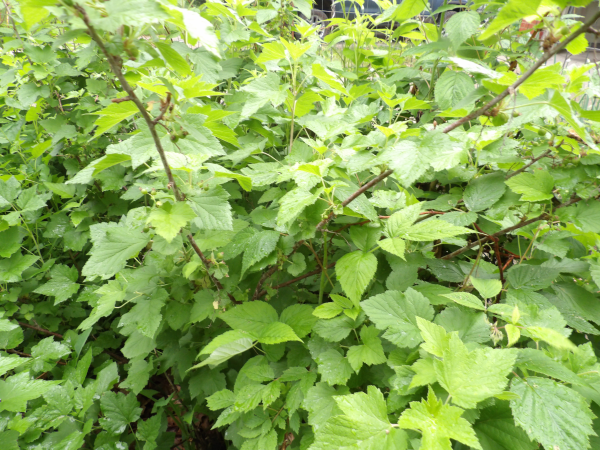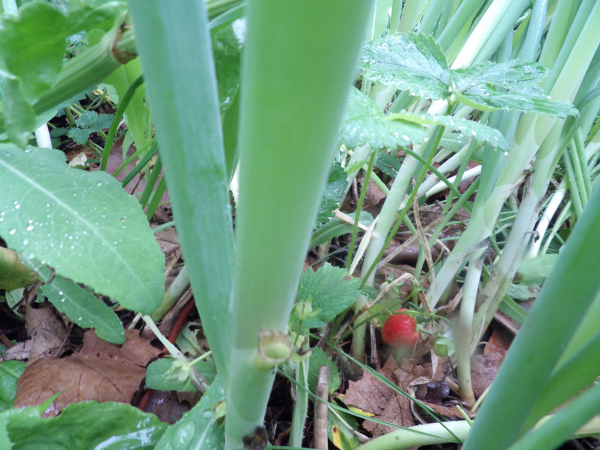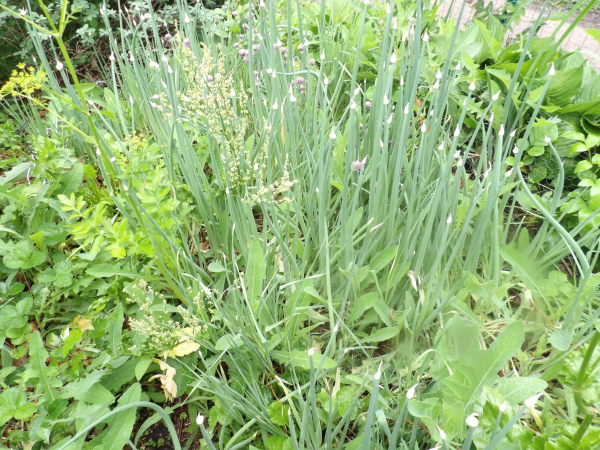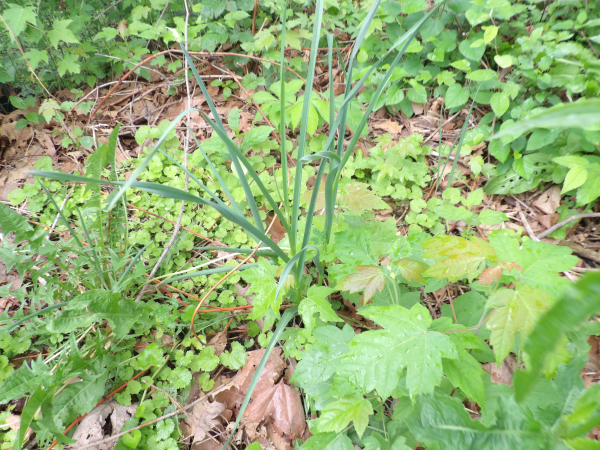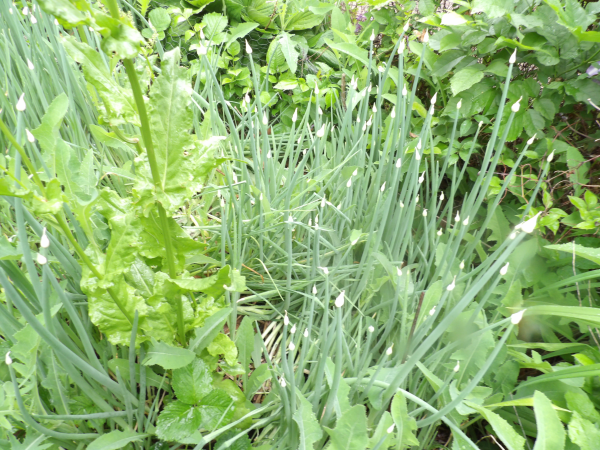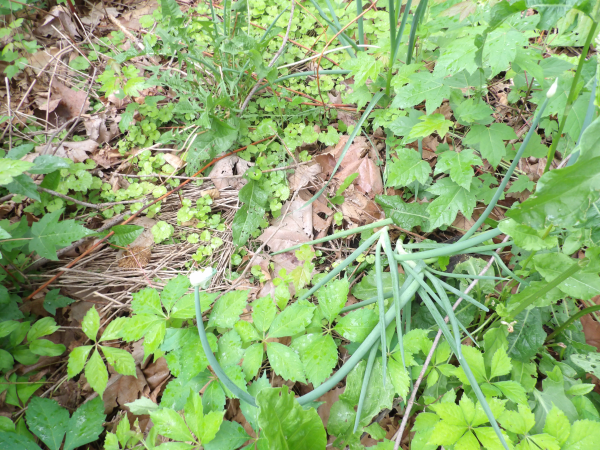money in groceries.
In the front garden, we planted fruit trees and perennial vegetables.
As of 6-11-2022, some fruit trees have fruit but not yet ripe.
Fruit trees and vegetables to grow to save money in groceries
White currant (Ribes rubrum) Swedish White
Red currant (Ribes rubrum) Red Jade
Black currant (Ribes rubrum) Black September
Raspberries
Raspberries canes produce fruit on last fall canes in early summer and this current year canes will produce fruit in fall in the current year and in early summer the following year and you cut the canes that produce fruit in early summer to leave space for spring canes to grow and produce their first fruit in fall.
Chinese Yams (Dioscorea polystachya)
Chinese yams are in the Dioscorea family.
You can read more on Chinese yams here:
I planted it few years ago and slowly it has been self-seeding in the garden. It produces small yams in late summer on the vine and is believed to grow 1 yam in the ground. It is perennial edible yam to our zone 5 A.
Strawberries
Strawberries started to ripe in June in our garden.
Egyptian walking onions (Allium proliferum)
By June, Egyptian walking onions started to grow the main stem that will carry the bulbils. That is the time they stop producing greens. You must harvest onion greens from them for freezing otherwise, shortly after June, most of the mother bulb energy will go toward the bulbil’s growth.
Garlic
You can grow garlic as perennial in your garden if you want to harvest the greens for cooking and leave the bulbs in the ground year around. They do well like that in our front yard garden growing underneath the fruit trees.
Columnar apple trees
One of the 2 trees fruited in 2022.
Columnar apple tree is supposed to grow a trunk and apple will grow close to the main trunk.
In your fruit garden, you could plant fruit trees, fruit shrubs, and ground cover fruit plants like strawberries.
The fruit plants and shrubs will grow fruit earlier than fruit trees providing you some fruit while you wait on fruit from the fruit trees.
The fruit shrubs and plants may not produce a lot of fruit while fruit from tall fruit trees like apple trees yield a lot of fruit at maturity.
Honey Berries
By June, Honey berries were ripe.
Concord grape seedless
They started to fruit in June.
Concord grape seeded
Seeded concord grape vine started to fruit in June.
Seeded concord grape yield a lot of grapes.
It is hardy to our zone 5a.
Seeded concord grape and seedless concord grape are both well hardy to our zone 5A. They are the only 2 grape vines that are producing in our garden. The other grape vines varieties we planted do not handle our winter well.
Italian plum
Italian plum tree started to produce plum for the first time in 2022.
Asparagus
Asparagus is growing in the garden right next to fruit trees.
Blue Berry
Blue berries are growing but not yet ripe.
Parsnip
Parsnip can be used like carrot. It is a root vegetable. Parsnip when left to go to seed, can self-sow in your garden.
Wealthy apple
Wealthy apple tree is producing fruit for the second year and produced more fruit this year compared to last year.
Autumn olive tree
Autumn Olive flowed in spring.
It is a nitrogen fixer and is known to have some antioxidants good for men.
Victoria rhubarb
Victoria rhubarb is flowing in the garden by June.
Whether it is your front yard or back yard, you could plant some vegetables or fruit trees or a combination of both that are hardy to your zone and that you buy in the store. If you can grow some of fruit trees and vegetables, overtime, you will be able to rely on your harvest and not purchase them from the store. Your grocery budget might remain the same giving you more purchasing power to purchase grocery staples you do not grow.
We set $300/month for our grocery budget for our family of 5 which includes $150 for grocery staples, $60 for fruit, and $90 for meat.
By growing some of our own food, overtime, we do not purchase garlic, onion, and most spices from the grocery store any longer.
When you start your garden, it is good to plant some annual vegetables while you search and plant perennial vegetables and fruit trees. The last 2 take some years to establish. The annual vegetables will produce quickly, and yield produce for your consumption. You could leave some to go to seed to harvest your own seeds for the following year. Your perennial vegetables by the following year will produce a light harvest for you and go from there. Perennial vegetables and fruit trees are low maintenance compared to annual vegetables and can grow long tap roots to search their own nutrients in the ground.
You will focus your attention on pruning fruit trees and feeding your land through mulching. And your land will feed you.
Dandelion
Dandelion is a wild plant with edible leaves raw or cooked.
With perennial vegetables, you purchase the seeds once and propagate from your plants once they established. That saves money for not buying seeds every year.
You can propagate some fruit shrubs and fruit plants including raspberries, blackberries, strawberries, and black currants.
Growing your own food on your property is the healthiest food you would ever eat as they are natural, fresh, and organic. With proper mulching, you do not water your garden, you do not fertilize, and you do not use pesticide.
Grow your own medicine
While you grow your own food, you could grow your own medicine as well.
Elderberries:
They can be used to make cough syrup a natural remedy for winter to help during flu season.
Planting perennial vegetables, you do not till your garden in spring. You do not check garden calendar to see the right time to plant. When people are tilling their gardens, you are making your spring harvest. Perennial and biennial green vegetables grow early in spring and if you do not harvest them on time by late spring, they will start producing seeds and yield less greens for you. So, you harvest your greens early and freeze some for winter use while you eat from your garden.
How to grow your own food to save money on groceries?
